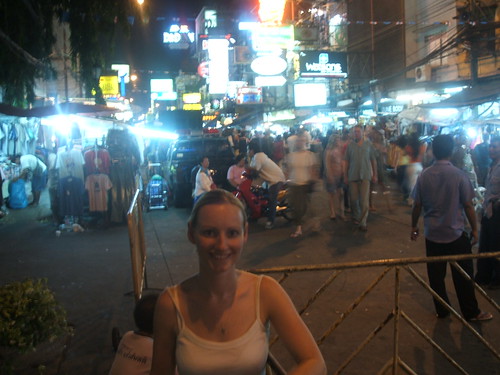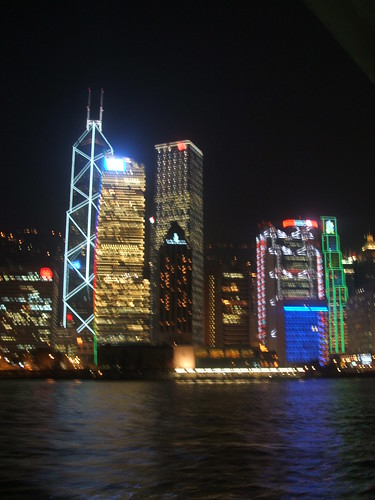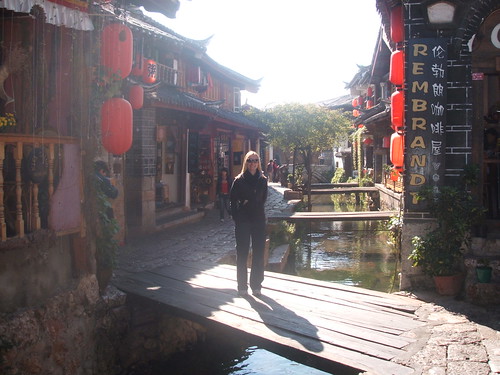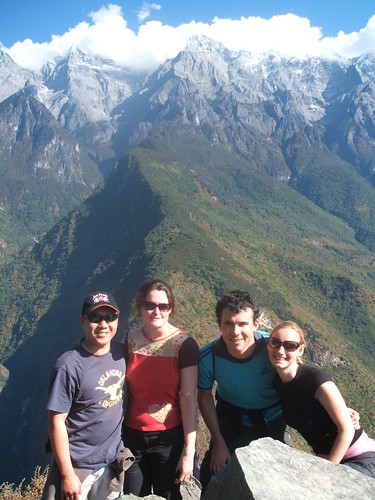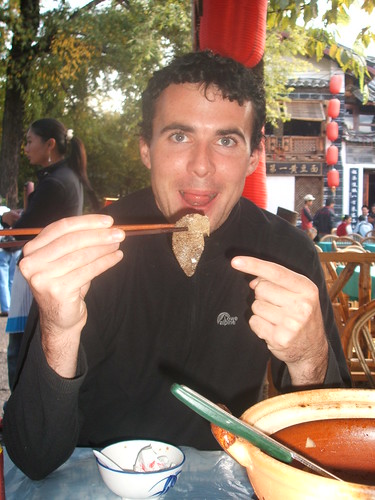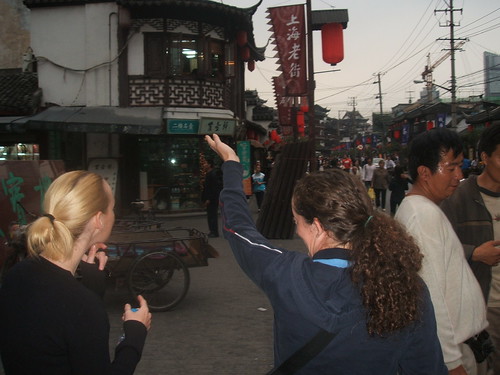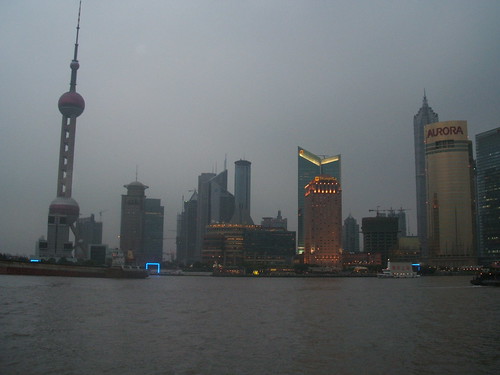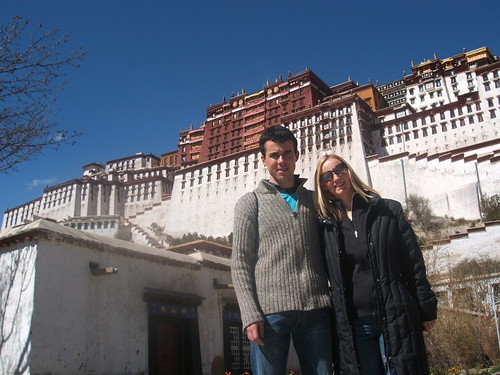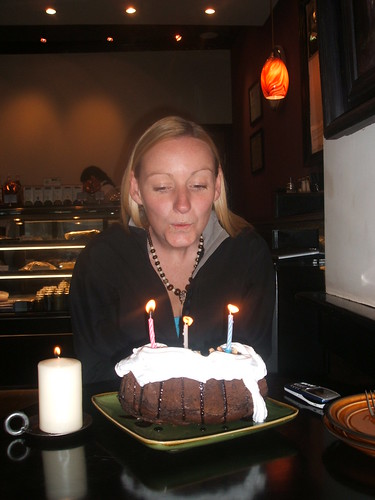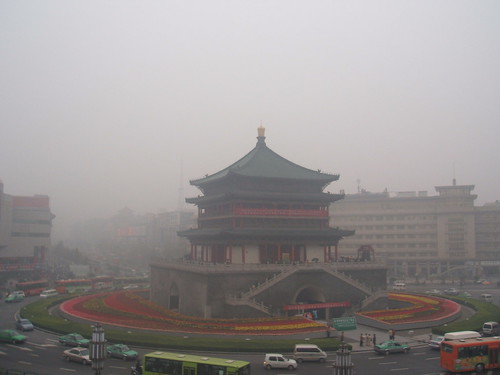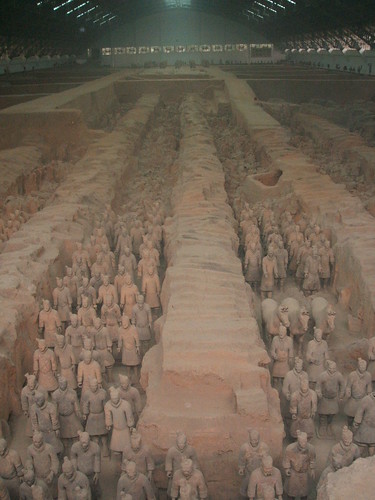Kanchanaburi, Thailand
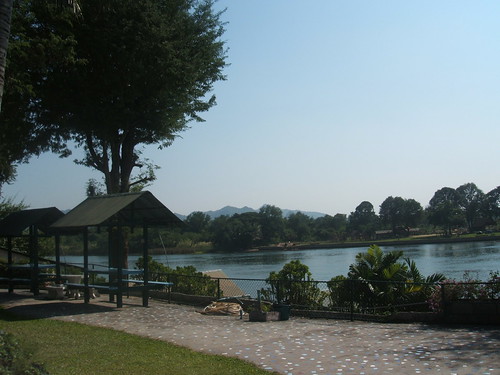 Monday to Wednesday, 13 to 14 November 2006
Monday to Wednesday, 13 to 14 November 2006Kanchanaburi is a 2 hour bus-ride to the west of Bangkok. It was made famous by the World War II film "The Bridge on the River Kwai". Eager to satisfy the increasing number of tourists visting the town after the film was released, locals started saying that a bridge at the town was the one from the film. We learned that this was mostly codswallop. As we were visiting the bridge, a historian was giving an interview to a camera crew there. He explained to them that this bridge was in no way as strategically important as the film made out. We got talking to him afterwards and he said that there were a number of other bridges on the river linking up the Burma-Thailand "Death Railway" (over 100,000 POWs died building it) and these continued functioning up until 1945. So, the myth was shattered. Next thing they'll be saying is that hobbits don't exist...
We stayed at the Jolly Frog hostel, which was an oasis of calm, set nicely beside the River Kwai. An oasis of calm, that is, except for the man in the room next door. An elderly fellow, clad from head to toe in what looked like Daz white pyjamas, he spent the day mumbling to himself and pacing the balcony outside his room. After seeing him howl like a hyena at one of the staff, we just thought he was a bit unhinged. Then, at 4.30 am the next morning, we were woken through the paper-thin walls to him chanting and opening and closing doors in his room. Not sure what was going to happen next, we didn't sleep for the rest of the morning. We were told later that the man was some kind of buddhist monk who had to get up at sunrise to say prayers. It seems that being a holyman can excuse all sorts of bad behaviour though: later that day, he roared through bathroom wall that "everyone must worship the universe"! If only they would do it quietly!
Kanchanaburi was a great place to visit.
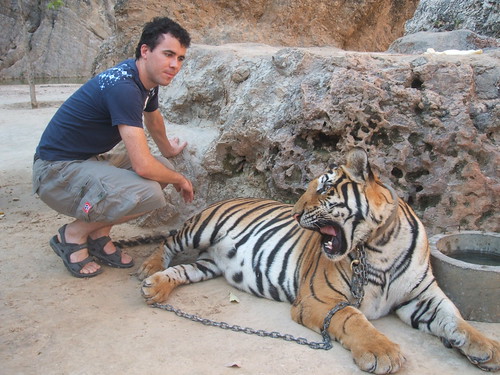 We trekked through lush forest to the Erawan Falls, regarded by some as the most beautiful waterfalls in Thailand. They lived up to the billing: the waterfalls are on 7 tiers and, at the highest one, you can go for a dip in a pool just below the waterfall. We also visited a "Tiger Temple": a sanctuary for tigers who can't survive in the wild, and did an elephant ride. The former seems to be a genuine attempt to provide a home for tigers. Not so sure about the elephants though as their minders seemed to be pretty brutal with them at times.
We trekked through lush forest to the Erawan Falls, regarded by some as the most beautiful waterfalls in Thailand. They lived up to the billing: the waterfalls are on 7 tiers and, at the highest one, you can go for a dip in a pool just below the waterfall. We also visited a "Tiger Temple": a sanctuary for tigers who can't survive in the wild, and did an elephant ride. The former seems to be a genuine attempt to provide a home for tigers. Not so sure about the elephants though as their minders seemed to be pretty brutal with them at times.After one tour, our Thai guide invites us, and Itje and Annelies, two Dutch girls we have become friends with, on a night out in Kanchanaburi. We are chaffeured by the guide's friends on scooters at lightening speed to one of the town's live music venues. We are the only foreigners there and get to see some impressive Thai hip-hop and some less impressive Johnny Logan imitators. We pass on the scooter rides back to the hostel but then find out that there are no taxis in the town - only taxi scooters. After another hair-raising journey home, we are tired enough to sleep through the monk's morning prayers.
Unfortunately, we have left alot of the photographs from Kanchanaburi on a computer in a Thai internet cafe. These include the ones of the waterfalls - Dara a.k.a Ursula Andress in swimming togs - so they may appear on the internet in any event. For the ones we managed to salvage, click here.
